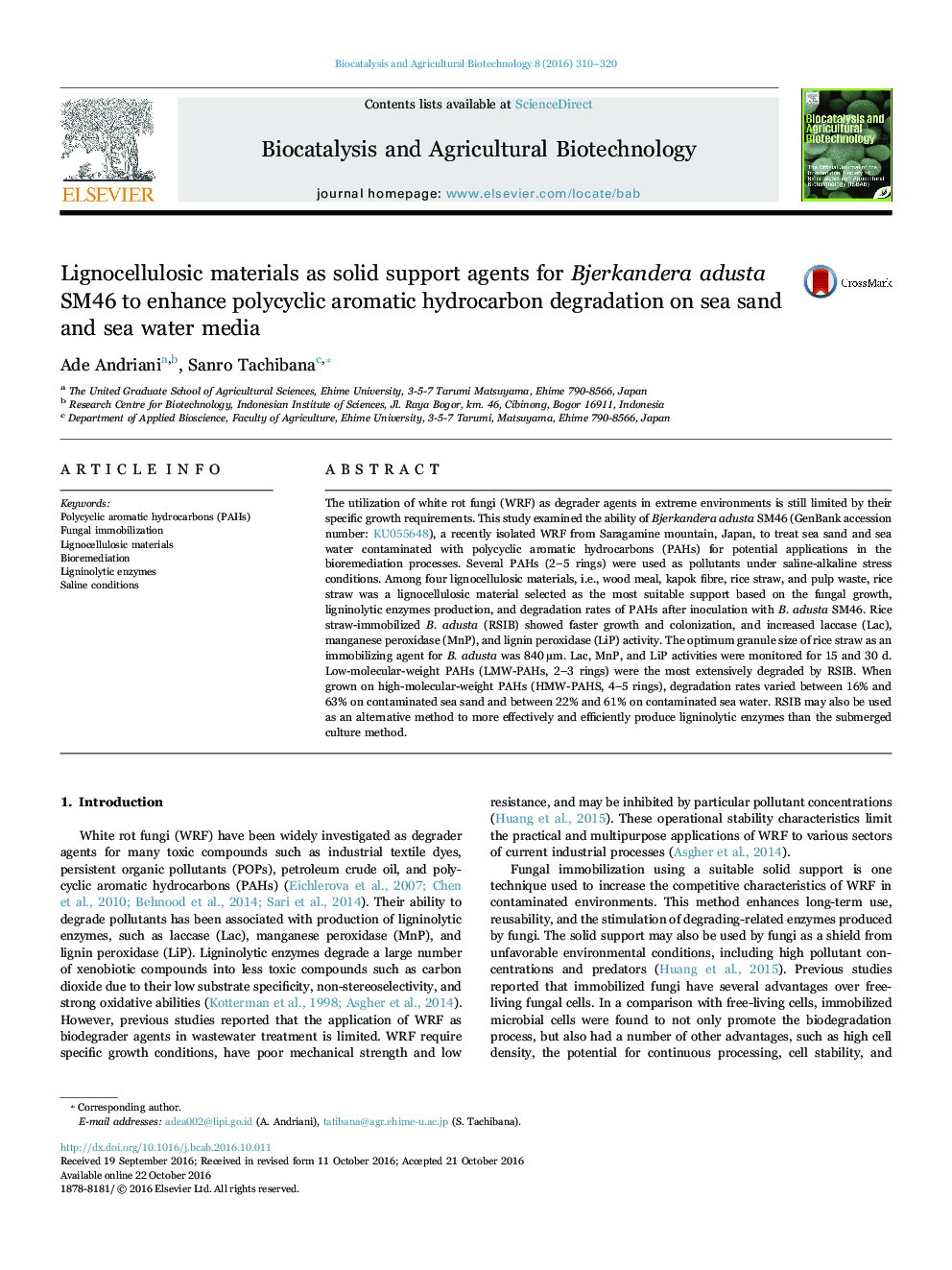| Article ID | Journal | Published Year | Pages | File Type |
|---|---|---|---|---|
| 8406315 | Biocatalysis and Agricultural Biotechnology | 2016 | 11 Pages |
Abstract
The utilization of white rot fungi (WRF) as degrader agents in extreme environments is still limited by their specific growth requirements. This study examined the ability of Bjerkandera adusta SM46 (GenBank accession number: KU055648), a recently isolated WRF from Saragamine mountain, Japan, to treat sea sand and sea water contaminated with polycyclic aromatic hydrocarbons (PAHs) for potential applications in the bioremediation processes. Several PAHs (2-5 rings) were used as pollutants under saline-alkaline stress conditions. Among four lignocellulosic materials, i.e., wood meal, kapok fibre, rice straw, and pulp waste, rice straw was a lignocellulosic material selected as the most suitable support based on the fungal growth, ligninolytic enzymes production, and degradation rates of PAHs after inoculation with B. adusta SM46. Rice straw-immobilized B. adusta (RSIB) showed faster growth and colonization, and increased laccase (Lac), manganese peroxidase (MnP), and lignin peroxidase (LiP) activity. The optimum granule size of rice straw as an immobilizing agent for B. adusta was 840 µm. Lac, MnP, and LiP activities were monitored for 15 and 30 d. Low-molecular-weight PAHs (LMW-PAHs, 2-3 rings) were the most extensively degraded by RSIB. When grown on high-molecular-weight PAHs (HMW-PAHS, 4-5 rings), degradation rates varied between 16% and 63% on contaminated sea sand and between 22% and 61% on contaminated sea water. RSIB may also be used as an alternative method to more effectively and efficiently produce ligninolytic enzymes than the submerged culture method.
Keywords
Related Topics
Life Sciences
Agricultural and Biological Sciences
Agricultural and Biological Sciences (General)
Authors
Ade Andriani, Sanro Tachibana,
